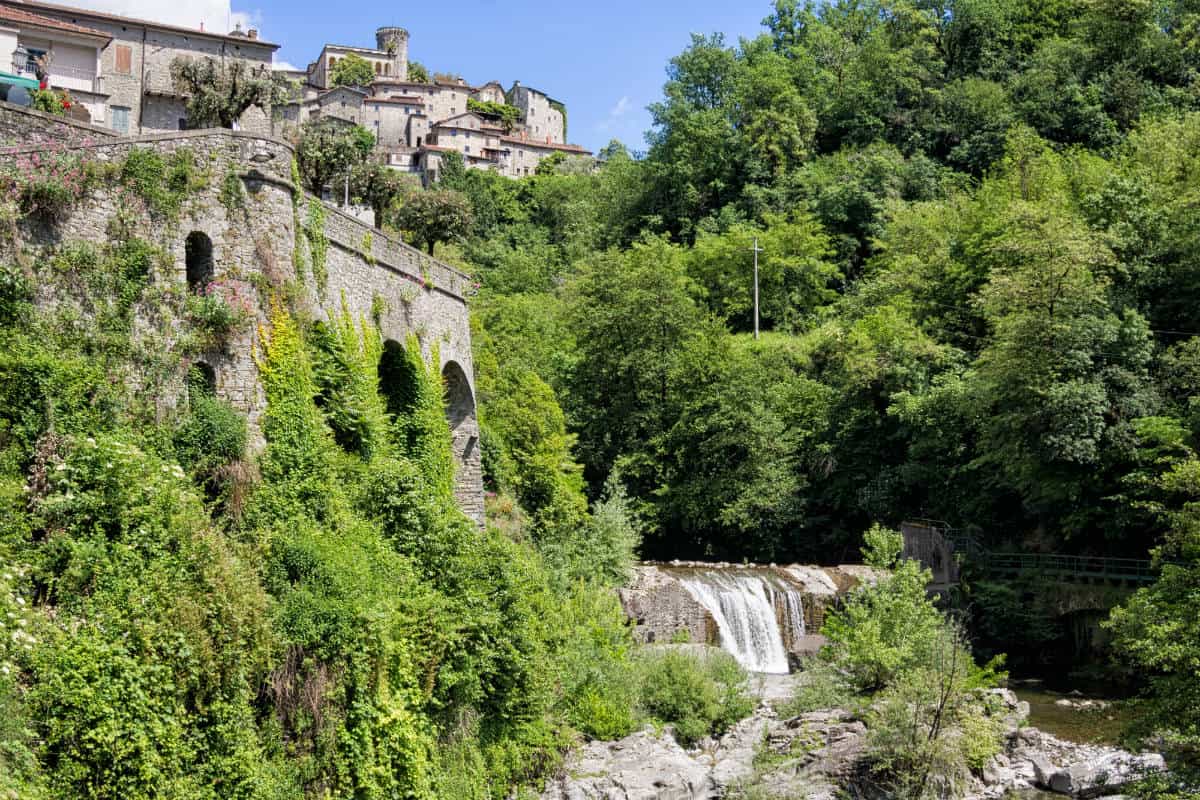Bagnone
- Village with castle
- Orange Flag Countries
About the village
The area of Bagnone (Bagnòn in dialect of Lunigiana, Bondelia in Latin), in Lunigiana, was inhabited since the Stone Age and the finding of a statue of stele at Treschietto shows the human presence during the Bronze Age. Bagnone is named for the first time in a document of 963 and the name of the village is traced back to the name of the homonymous stream flowing not far from the castle, the original nucleus of the town. At the origin, the term Bagnone indicated the stronghold and the agglomeration of houses built around the castle, built on the left bank of the Bagnone stream, from which the place took its name and whose circular tower was in visual communication with similar fortified structures (Groppoli, Mulazzo , Malgrate), to control the valley roadway along the road bend of the Francigena Street. Bagnone's first documented news, which was originally built as a castle over the ancient hamlet of Gutula (later incorporated), is contained in a papal bubble of 1148.
Under the control of the Marquis of Malaspina, Bagnone became an independent feud in 1351. A century later it became part of the territory of the Republic of Florence and then the Grand Duchy of Tuscany and stayed there until the Napoleonic period. In 1815 he returned to the Grand Duchy of Tuscany, but in 1849 he was annexed to the Duchy of Parma and remained there until Unification of Italy in 1859.
They certainly deserve a visit to the Museum of Memory, the church of San Niccolò, the Oratorio of San Terenzio and the Castle of Bagnone and that of the Treasury.
In the course of history, the inhabitants of the Bagnónese, when they felt in danger, took refuge in the various 'huts' scattered around the Apennine, such as the Tornini, Garbai, Baton hills, above the hamlet of Iera, along the ancient via the salt, or to the Fagianelli, to the north of the Vico hamlet, on the Re di Valle stream, on the ancient mule track for the "Death Pianel", dotted with numerous huts. These ancient shelters have become bivouacs and cribs for shepherds, peasants and peasants who used them there during the cleaning of the forests and the harvesting of chestnuts. From these mountains it is easy to reach "Highway of the Parks", an itinerary of more than 450 kilometers to promote a territory of great naturalistic, landscape and historical interest.
The small village also boasts a long tradition of growing onions in the area of Treschietto, from which it is named. Also worth mentioning are other Lunigiana specialties such as the Testaroli, the Herb Cake, the Barbuta, the Sgabeo, the Bomb of Rice, the Potato Pie, the Pumpkin and Potato Cake, the Pork Cake, lamb, almond cake, bagnese tortellas, bastard lasagna, chopsticks.
Village of Bagnone
Municipality of Bagnone
Province of Massa and Carrara
Tuscany Region
Population: 1.761 bagnonesi
Altitude centre: 236 m s.l.m.
the Municipality is part of:
Strada del Vino Colli di Candia e di Lunigiana
Unione Montana Lunigiana
Bandiera Arancione
Protected Natural Areas:
Bagnone Valley Natural and Cultural Park
Tuscan-Emilian Appennine National Park
Municipality
Piazza Marconi 1 - Tel. +39 0187 42781
18.23 Kilometers from Bagnone
23.26 Kilometers from Bagnone
20.08 Kilometers from Bagnone
BY CAR
- From the North: Take the A1 highway, follow the direction La Spezia - Parma Ovest, continue on the Cisa A15 highway, exit at Pontremoli, continue on the SP 31, cross Scorcetoli-Monteluscio, Mocrone, Canaletto, take the SP 28 for Bagnone.
- From the South: Take the A1 highway in the direction of Florence, follow the Livorno direction, continue on the A11 highway, in Viareggio follow the Genoa direction, continue on the A12 highway in the direction of Parma, continue on the Cisa A15 highway, exit in Aulla, cross Aulla, Masero, Villafranca in Lunigiana, Virgoletta, continue in the direction of Bagnone.
ON THE TRAIN
- Villafranca railway station
BY PLANE
- Pisa airport
- Florence airport
Sleep, eat, buy...
21.88 Kilometers from Bagnone





















